These Fluffy Japanese Soufflé Pancakes are like eating cottony clouds, but even better with homemade whipped cream and fresh berries! Read my best tips in this recipe and learn how to make them perfectly.
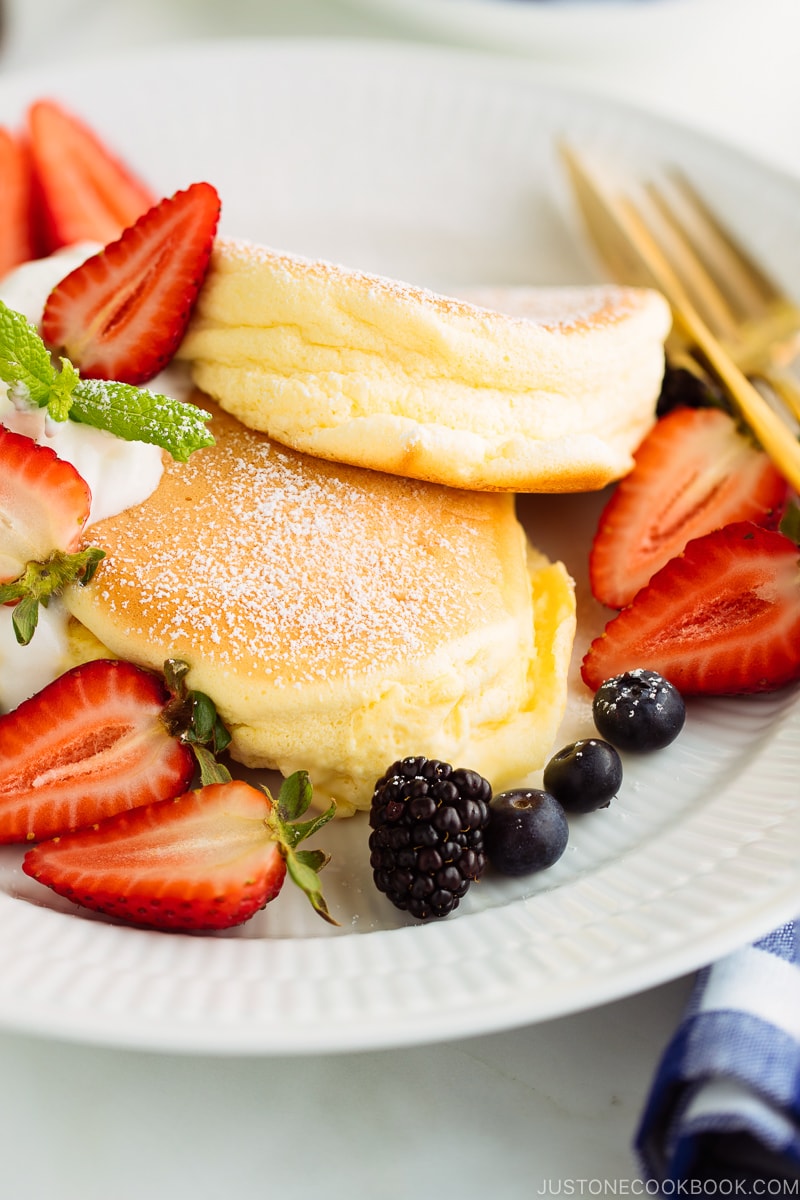
The Japanese take pancakes to new heights. Think cottony clouds of heaven that melt in your mouth! Have you seen Fluffy Japanese Soufflé Pancakes (スフレパンケーキ) on social media? Or maybe you have even tasted them when you visited Japan?
They are fluffy, airy, delicate pancakes that probably look too fancy for a weekday breakfast, but are impossible to resist making on the weekend. These pillowy, soft pancakes are a must-try. You can’t miss the fizzy, bubbly sound from the soufflé pancakes when you cut them open to enjoy!
What are Fluffy Japanese Soufflé Pancakes?
The ingredients for soufflé pancakes are similar to regular pancakes, so what makes them different? What makes soufflé pancakes so pillowy soft and delicious?
Soufflé pancakes are all about eggs. Egg yolks and egg whites are separated, and the whites are beaten to make the meringue. Just like you would with savory and sweet soufflé or chiffon cakes.
The egg whites are beaten until stiff peaks form and then folded gently and carefully into the rest of the batter. The soufflé pancakes are extra fluffy because the air bubbles hold their shape inside the pancake batter.
As a result, the pancakes are super airy, like soufflé. When you cut the pancakes, you can even hear the sound of air bubbles escaping!
Enjoy these soufflé pancakes the same way you do with standard flapjacks, with fresh whipped cream, some fruits, syrups, and toppings like chocolate chips and nuts.
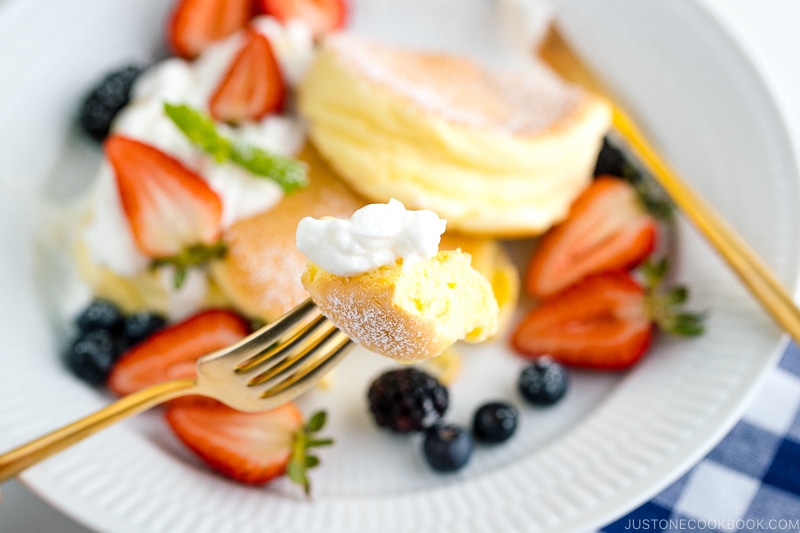
Recent Pancake Craze in Japan
Pancakes are comfort food. The happiest comfort food. I’m sure you have many joyful memories of waking up on a Saturday, looking up at a stack of pancakes on your plate. And now as an adult, you are probably like me, always searching and trying different pancake recipes, happily eating your way on a journey to find the perfect pancake.
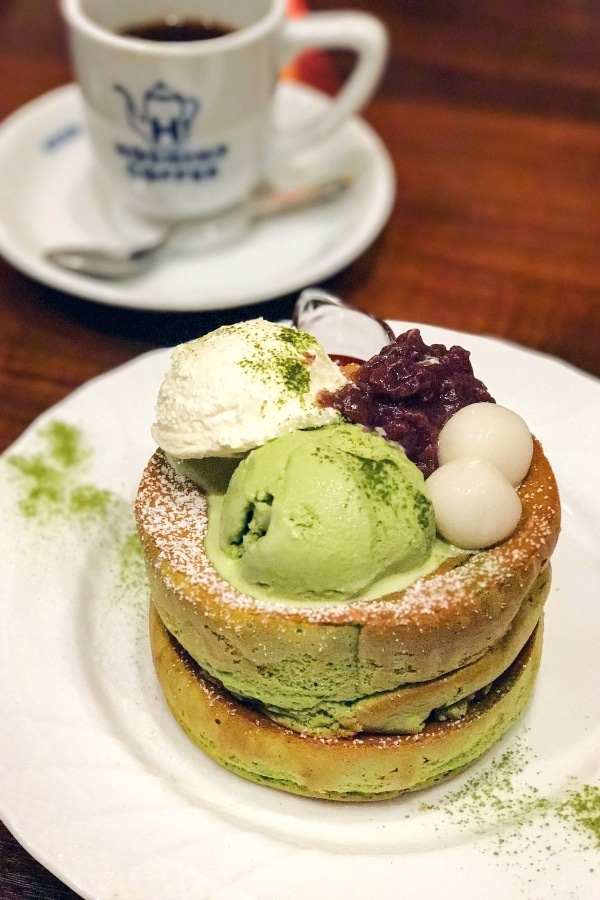
In Japan, even the simplest of comfort foods like pancakes are taken very seriously. In recent years, Japan’s pastry shops and cafes have been in a race to make the fluffiest, softest pancakes. And by 2016, the pancake craze in Japan was in full swing with pancake shops opening all over the country competing for the best soufflé pancakes. Here are some of the most famous:
- Kiln-baked Soufflé Pancakes (窯焼きスフレパンケーキ) at Hoshino Coffee (picture above)
- Miracle Pancakes (奇跡のパンケーキ) at Flippers
- Happy Pancake (幸せのパンケーキ) at A Happy Pancake
These pancake shops did not exist when I was growing up. If they did, I would have been there on every special occasion and birthday! I’m making up for the lost time by creating these soufflé pancakes every chance I get.
5 Important Tips to Make Fluffy Japanese Soufflé Pancakes
Here are some of my personal tips that helped me achieve the perfect soufflé pancakes.
1. Beat the egg whites (meringue) correctly.
To be honest, making meringue requires a lot of practice. Some trials and errors are just part of the process, but I promise it does get easy once you have more experience and understand what it takes to reach the right consistency.
We’re looking for a stiff peak with a tip that folds over. When you lift up your whisk, the egg whites go straight up firmly, but the very tip of the egg whites fold over, like taking a bow. If you overbeat egg whites, they will break into pieces. If you under-beat, egg whites don’t have enough air bubbles and the pancakes won’t be fluffy.
2. Preheat the nonstick frying pan on the lowest setting for a longer time.
Even heating is crucial for the pancakes to cook through all at once. You want to preheat your nonstick frying pan at the lowest heat to help prevent hot spots (meaning some part of the pan is lower in heat, and the other part is too hot). This way you have full control over the cooking time and the final result.
3. Pile the batter vertically (high).
The key to making lofty pancakes is to add a new pile over the batter on the pan after it starts to form.
4. Cook slowly, covered with a lid, on low heat.
Unlike regular pancakes, you will need to cook these thick & fluffy Japanese pancakes for a much longer time. If you use higher heat, the pancakes may look done, but the inside will be too raw. Therefore, steady slow cooking over low heat is necessary. To lock in the heat and moisture inside the pan, cover with a lid.
5. Add water to create a little bit of steam.
I’ve tried without adding water before and the difference can be subtle. But since it doesn’t take much to add water, I include this step in my recipe. Just drop 1 tablespoon of water to empty spaces in the frying pan to add moisture to the pan.
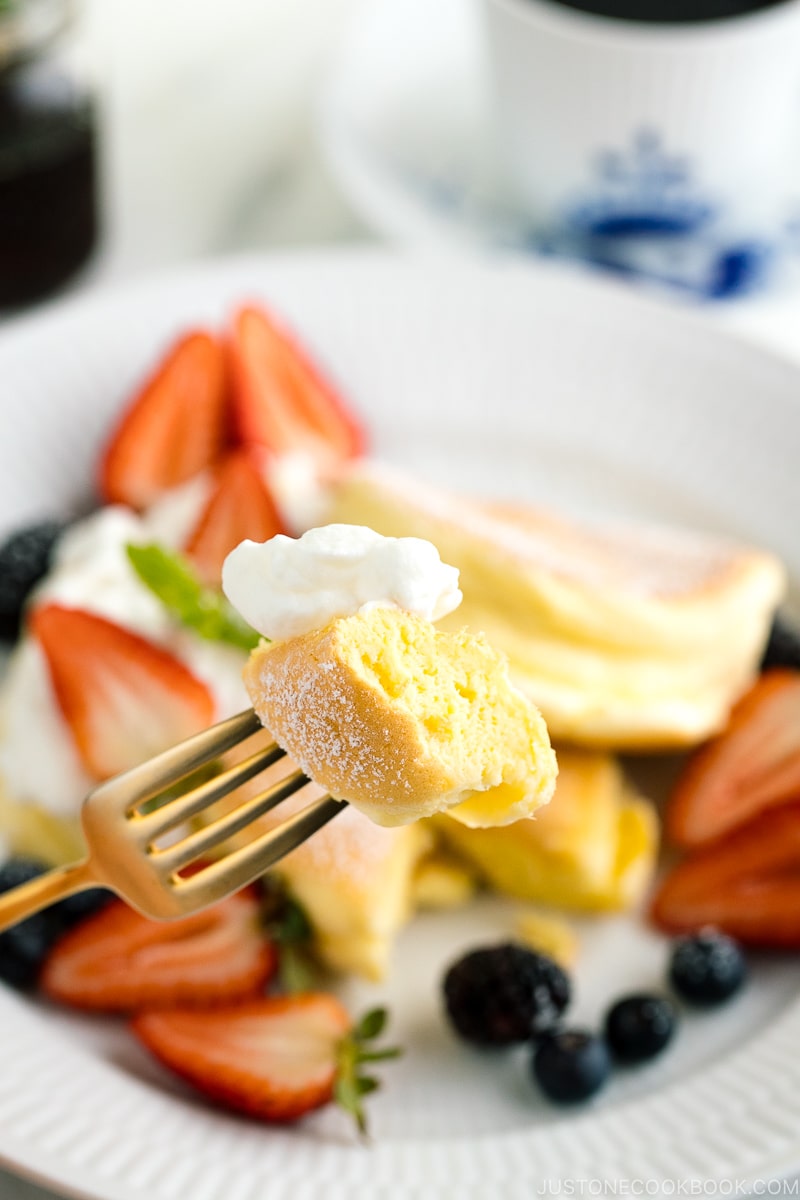
Why Does My Soufflé Pancake Deflate? Trouble Shooting
When making soufflé pancakes, one of the common situations people run into is that the pancakes tend to deflate after cooking. Now, is that normal? No, a souffle, including souffle pancakes, should still stand tall after you place them on the plate.
What goes wrong? What can you do to stop your soufflé from collapsing?
1) You have probably under or overbeaten the egg whites. The goal is to create air bubbles in the batter that will give structure to the pancake. Without them, the pancake will deflate.
2) Stove heat was too strong. Just because the pancake is nicely brown, it doesn’t mean it’s done. The inside of the pancakes may still not be cooked through and if you move them out of the pan earlier, the air deflates. Properly cooked soufflé pancakes will have a solid structure and height. They will hold for 10-15 minutes as long as they are warm (just like hot air balloons).
How to Make More than 3 Pancakes at A Time?
To make two or more servings, you will need multiple non-stick frying pans on the stove. Alternatively, you can purchase an electric griddle with a lid like this.
At the soufflé pancake restaurants in Japan, they use multiple electric griddles with a lid to make pancakes. The staff would usually tell you the souffle pancakes will take at least 20 minutes to make.
These souffle pancakes definitely require extra time and effort, but I promise after that first bite, you will know it was all worth it. Give this unforgettable soufflé pancake recipe a try on the next special occasion!
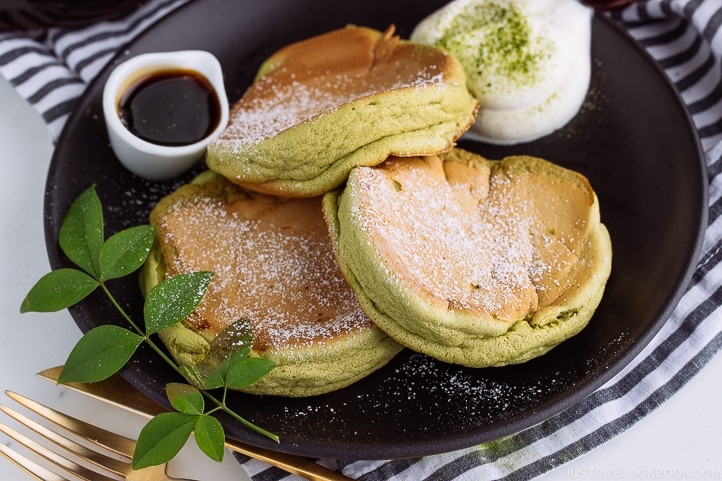
I also have a Matcha Soufflé Pancake recipe that I think you’ll going to love! The brilliant green hue and extra flavor boost from matcha make the pancakes even more irresistible.
More Delicious Breakfast Recipes You’ll Like:
- Red Bean Pancakes
- Matcha Soufflé Pancakes
- Buttermilk Pancakes
- Easy Homemade Granola – Copycat Furugura
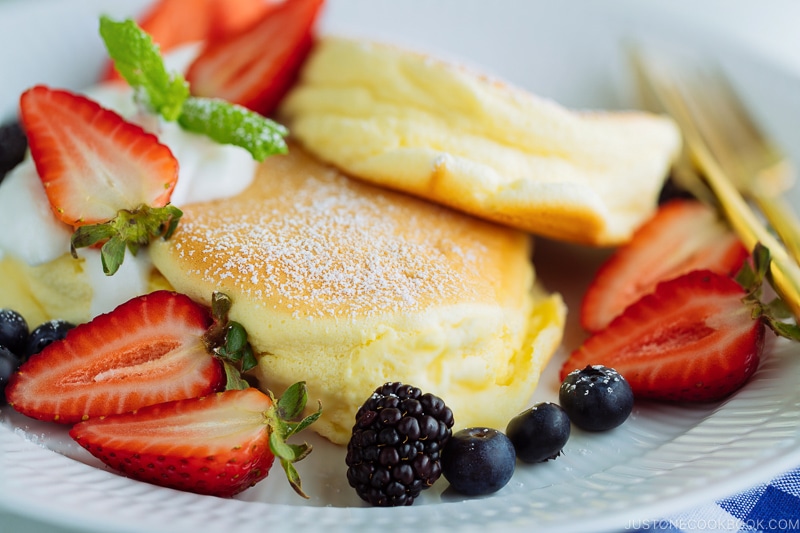
Wish to learn more about Japanese cooking? Sign up for our free newsletter to receive cooking tips & recipe updates! And stay in touch with me on Facebook, Pinterest, YouTube, and Instagram.
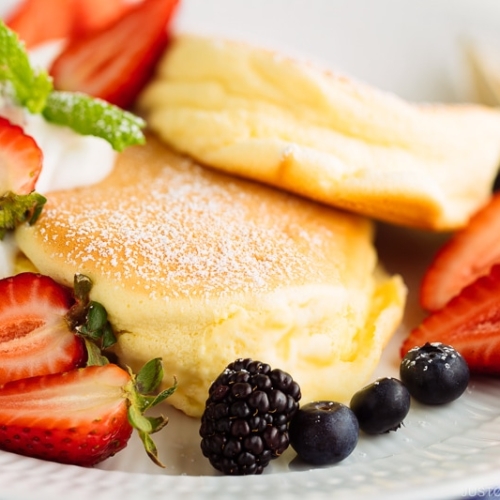
Fluffy Japanese Soufflé Pancakes
Video
Ingredients
- 2 large eggs (50 g each w/o shell)
- 1½ Tbsp whole milk (I haven‘t tried reduced-fat, low-fat, nonfat, or plant-based milk for this recipe as I believe the batter will be too thin to make souffle pancakes)
- ¼ tsp pure vanilla extract
- ¼ cup cake flour (weigh your flour or use the “fluff and sprinkle“ method and level it off; you can make homemade cake flour)
- ½ tsp baking powder
- 2 Tbsp sugar
- 1 Tbsp neutral oil (for greasing the pan)
- 2 Tbsp water (for steaming)
For the Fresh Whipped Cream (optional)
- ½ cup heavy (whipping) cream
- 1½ Tbsp sugar (add more if you like it sweeter)
For the Toppings
- 1 Tbsp confectioners’ sugar
- fresh berries (strawberries, blueberries, etc.)
- maple syrup
Instructions
- Gather all the ingredients. I highly encourage you to use metric measurements using a kitchen scale for this recipe. Click on the “Metric“ button at the top of the recipe to convert the ingredient measurements to metric. You will also need a 12-inch nonstick frying pan (large enough to cook 3 pancakes at the same time) with a lid. It‘s also nice to have an infrared thermometer gun to check the temperature of the frying pan.

To Make the Fresh Whipped Cream (optional)
- If you‘d like to serve the Fluffy Japanese Soufflé Pancakes with optional fresh whipped cream, make it now. First, prepare an ice bath: Put ice cubes and water in a large bowl and place a clean and dry medium bowl on top of the ice water. Add ½ cup heavy (whipping) cream and 1½ Tbsp sugar to the medium bowl to keep them cold.

- Whisk on high speed until medium to firm peaks form. The cream should not be runny but soft, fluffy, and firm instead. Keep the whipped cream chilled until you‘re ready to serve the pancakes.

To Mix the Batter
- Separate 2 large eggs (50 g each w/o shell) into whites and yolks in two different bowls. Put the bowl with the egg whites in the freezer for 15 minutes. Why do we partially freeze the egg whites? Please read why in my post 2 Tips to Make Perfect Meringue (Egg Whites).

- In the meantime, add 1½ Tbsp whole milk and ¼ tsp pure vanilla extract to the egg yolks and whisk using a hand whisk until thick and frothy.

- Sift ¼ cup cake flour and ½ tsp baking powder into the bowl.

- Whisk to combine thoroughly; do not overmix. Set aside while you make the meringue.

To Make the Meringue
- After 15 minutes, take out the bowl with the egg whites from the freezer. The egg whites should be half frozen. Now, start beating the egg whites with a hand mixer (you can also use a stand mixer or balloon whisk).

- When the egg whites turn frothy and opaque, gradually add in 2 Tbsp sugar, roughly one-third of it at a time. Then, increase the mixer speed to high (Speed 10) and beat vigorously until stiff peaks form (see the next step for how to check). It takes about 2 minutes of beating at high speed to reach stiff peaks. Tip: When using a stand mixer, I usually pause beating when the meringue is almost done. Take off the whisk attachment from the mixer and use it to hand-mix the looser egg whites near the bowl's edge into the stiffer whites near the center until it's all homogenous in texture. Then, put the whisk back on and continue beating.

- To check for stiff peaks, stop whisking and pull up your beaters or whisk. The meringue in the bowl or on the whisk should be firm enough to hold a peak, pointing straight up (or maybe folding over a little bit just at the very tips). By this time, the meringue should have a glossy texture, too. Tip: If you overbeat the meringue, it will become very stiff and grainy and won't incorporate into the batter at all.

- Heat a large nonstick frying pan to 300ºF (150ºC) over the lowest heat. Brush with 1 Tbsp neutral oil and lightly remove any visible oil with a paper towel (otherwise the pancakes will have a spotty pattern). Keep the pan on low heat while you fold in the egg white meringue into the egg yolk mixture in the next step.

To Fold In the Meringue
- Take one-third of the egg white meringue and add to the egg yolk mixture. Whisk together by hand (don’t worry too much about breaking air bubbles at this point).

- Next, take half of the remaining meringue and add to the egg yolk mixture. Using a hand whisk, gently fold them in without breaking the air bubbles in the egg whites. Why do we use a whisk instead of a silicone spatula? Please read my post 2 Tips to Make Perfect Meringue (Egg Whites).

- Now, transfer the egg yolk mixture back into the bowl with the remaining meringue. Very gently fold the two mixtures together, taking care not to deflate the air bubbles in the meringue and batter as you fold. Mix the batter very gently until well combined and homogenous.

To Cook the Pancakes
- Keep your nonstick frying pan heated to 300ºF (150ºC) at all times over low heat. Remember, each pancake gets roughly four small scoops of batter, and you will be making three pancakes. For the first pancake, place one scoop of batter and make a tall mound in the frying pan, using a small ladle or a serving spoon (that’s bigger than a regular spoon—probably 2–3 Tbsp). Next, stack one more scoop of batter onto the first scoop already in the pan. Repeat for the next two pancakes, giving each pancake two scoops of batter.

- By the time all three pancakes have two scoops, the surface of the batter is slightly dry already. At this point, you can mound one more scoop on top of each pancake, keeping the batter piled up high. In the bowl, you should still have roughly three scoops left (if you have slightly more, that’s okay).

- Set the timer for 6–7 minutes and add 1 Tbsp of the 2 Tbsp water in three empty spaces inside the pan. Cover with a lid. The steam from the water keeps the pancakes moist while they cook. Please note: The suggested time is just a guideline; how long you will cook the pancakes is based on the temperature of your frying pan.

- After 2 minutes have passed, open the lid, and add one final scoop of batter to each pancake (or more scoops if you have more batter). Make sure to stack the batter high, not wide. If the water has evaporated, add a little bit more. Cover with the lid and cook.

- After 6–7 minutes have passed, lift the pancake VERY GENTLY using an offset spatula. If the pancake is stuck, don’t touch it until it firms up a little. If you force it, the pancake will crack in the middle. When the pancake is ready, you can easily move the pancake. Repeat with the other pancakes.

- Here is another set of images to show the process. Slightly pull the pancake to create an empty space and gently flip it over with a “rolling over” motion.

- Add another 1 Tbsp water to the empty spaces in the pan and cover. Set the timer for 4–5 minutes to cook the other side on the lowest heat setting.

- Once they are nicely browned, transfer the pancakes to your serving plates.

To Serve
- Place the optional fresh whipped cream on the pancakes and top with fresh berries. Dust your Fluffy Japanese Soufflé Pancakes with 1 Tbsp confectioners’ sugar and drizzle with maple syrup. Enjoy!

To Store
- For the fluffiest texture, I recommend making these soufflé pancakes just before serving. If you have leftovers, transfer them to an airtight container and store in the refrigerator for up to 2 days.
Notes
- Soufflé pancakes can be tricky to make (probably not easy for a beginner cook), so make sure to read my tips in the post thoroughly before you start cooking.
- Beat your egg whites correctly. Underbeating or overbeating will cause the pancakes to deflate after cooking.
- Cook over low heat, and make sure the insides of the pancakes are properly cooked through. If the inside is not cooked through, there is no structure to hold up the pancakes and they will collapse as soon as the temperature drops.
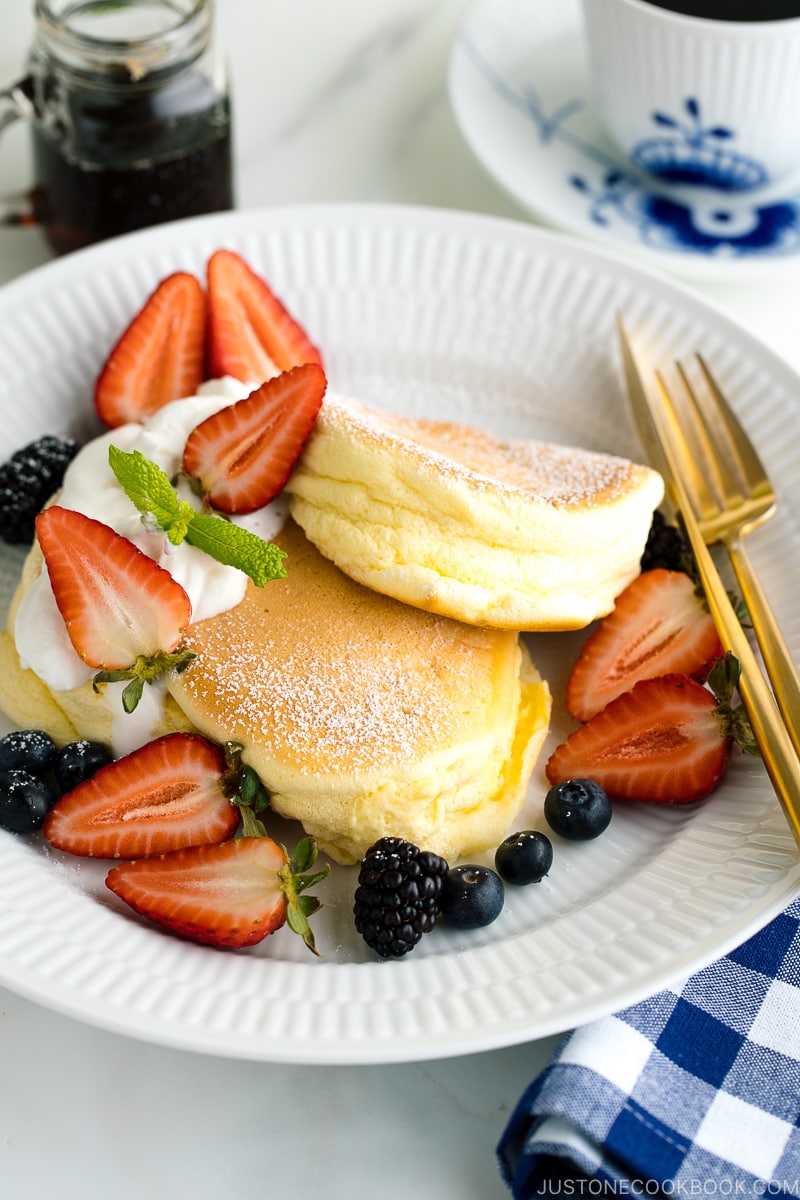
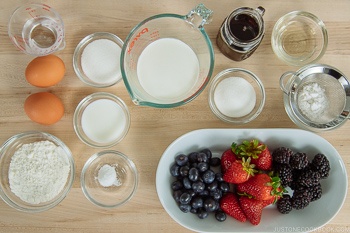


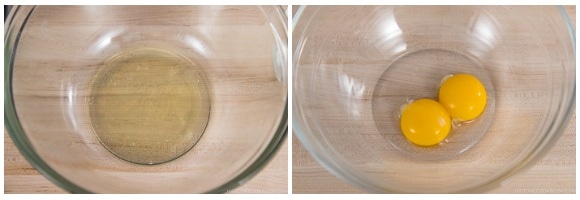


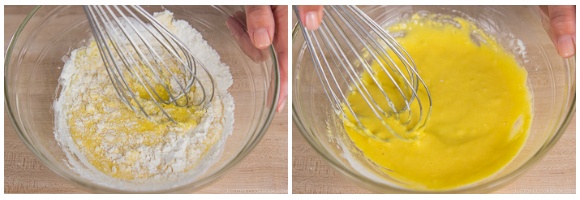

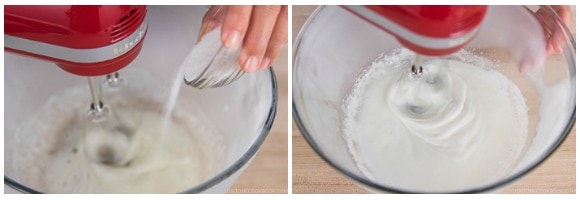
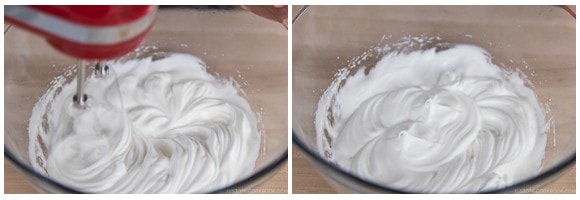
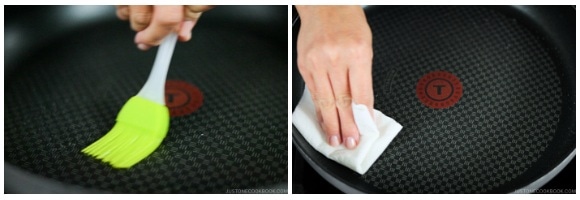


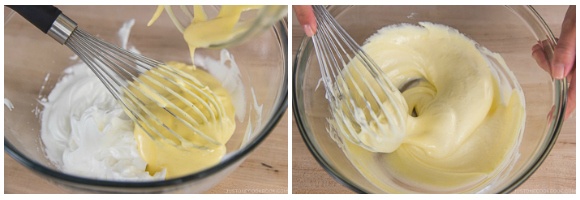
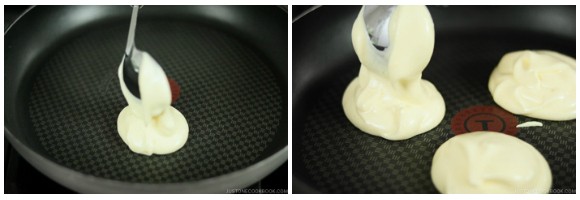
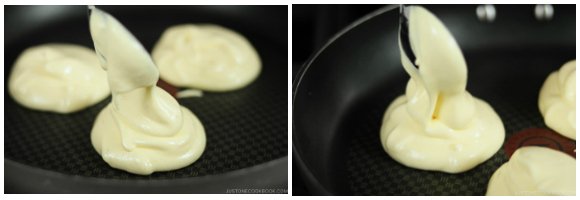
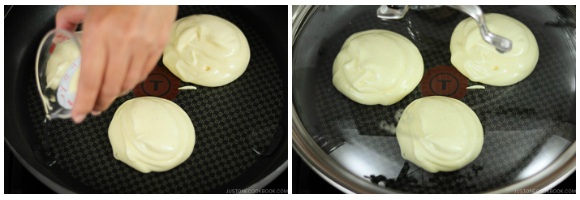

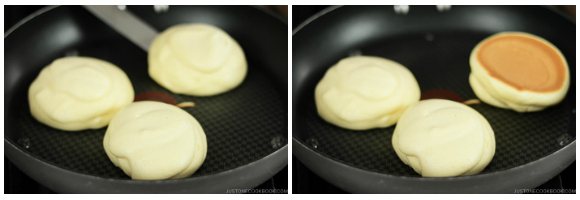

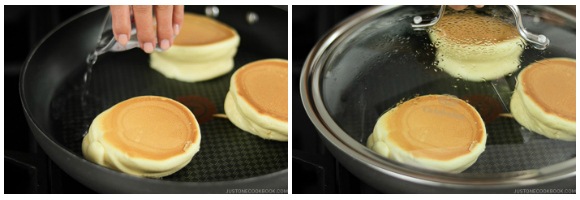
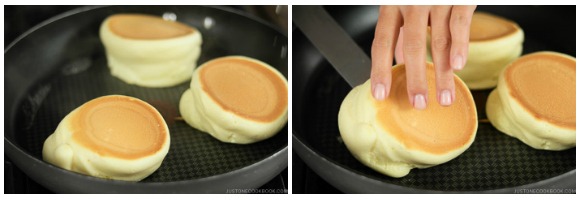
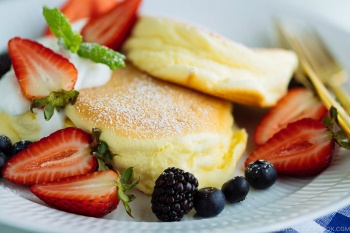










I have only read the recipe and all the instuctions and tips for this pancake. Unless I find out how to keep the heat steady at 300 degrees on an electric stove, I’m not likely ever going to attempt making these pancakes. I’ll probably visit a Japanese restaurant with my laptop and show the video to the chef and ask him (or her) to make them for me as a takeout item.
Hi John! Thank you very much for reading Nami’s post!
Most electric stove has a number knobs to control the cooking temperature. Usually, the number 2 setting is 300F/150C.
If you are unsure of the temperature of the knob setting, the grill surface thermometer is a great tool to check.
We hope this helps!
YUM! I made these souffle pancakes this past weekend. With all the tips (which are important), my souffle came out close to perfect. My son loved them! I’ll be making these every time instead of regular pancakes. Next time will be matcha souffle pancakes. Yum! Extremely light and fluffy with out the guilt. Wicked Good!
Hi Jan! Aww. We’re so glad to hear from you and that you found Nami’s tutorial helpful!
Thank you very much for trying Nami’s recipe and for your kind feedback!
We hope you enjoy Matcha Soufflé Pancakes too!😊
Great instructions. Thanks for the tips! I was making these for several people, so I got to experiment a little with each batch. The temperature makes a huge difference! At first I had the pan a little too hot so the first side burned a little, but they were easier to flip. Lower temps made it harder to flip. If you have a way to insure that your temp stays at 300 degrees, you should have great success at making these fun soufflé pancakes.
Hi Cori! Thank you very much for trying Nami’s recipe and sharing your cooking experience with us!
Yes! We agree keeping 300 ºF (150 ºC) at all times over low heat is the key.
Using Electric Griddle that has a temperature control might make it easier. 😉
https://www.amazon.com/dp/B00G2TVNCC?ref=exp_justonecookbook_dp_vv_d
We hope this helps!
This recipe does not work. I followed the recipe bit the batter did not hold like the video even though I got my mirang as described. Wiping the oil from the pan caused the pancakes to stick to the pan and broke when trying to flip. Low heat is not enough as the pancakes just sit there in water while nothing happens
Hi Rob! Thank you for trying Nami’s recipe!
We are sorry to hear your Pancakes did not turn out great this time.
This recipe is not easy, but here are a few tips that might be helpful. We also recommend watching Nami’s video.
We hope you will give it a try again!
1) Mix the batter very gently so that the air in the batter will stay.
2) Wipe the pan lightly and pick up ONLY extra oil.
3) Keep 300ºF (150ºC) over low heat to create steam. Total 1 Tbsp water in three empty spaces inside the pan, and it should not touch the pancake.
Konnichiwa! I am excited to try this recipe, but I do not own a non stick pan. I am not sure if anyone has asked about this yet but how do you recommend I use my “non” non stick pan to cook these? Or is it a bad idea to use a regular pan?
Hi Kagura! Thank you very much for reading Nami’s post and trying her recipe!
We are not sure what type of pan you own, but if you season a pan well, most types of the pan should work.
We hope this helps!
Yesss, it was worth all the work, they are unbelievable good. Like eating a cloud, only more calories :D.
The batter was very fluffy and the pancakes didn’t deflate, it was just too much for my 10″ pan or my eggs were again too big. I couldn’t turn em like I wanted but I will work on the technique (maybe make two batches?)
So the result might not look perfect but the taste was heavenly.
P.s. as it was a spontaneous decision I didn’t have fruits on hand but whipped cream and maple sirup worked perfectly.
Hi Brigitta! Thank you very much for trying Nami’s recipe and sharing your experience with us!
We are so happy to hear you enjoyed the fluffy pancakes!
Nami used a 12″ pan for this recipe, so you might want to cook in two batches or use two pans.
We hope this helps with your next try!🙂
Terrible time with this recipe. Yolk mixture came out too stiff, pancakes stuck, didn’t cook evenly even though it was on low heat. Will try a different recipe. Hopefully it comes out better.
Hi Matt! We are sorry to hear this recipe did not work well for you.
Here are some tips to help, and we hope you will give this recipe a try again!
If you use a cup measurement, please click the following link in the recipe card to measure correctly. Otherwise, the amount of flour tends to be more than you need, and it will end up with a stiff mixture. We hope Nami’s video in this post can help see how thick the yolk mixture should be.
As for heating, If the pan is not heating up well at the beginning, the pancake will be sticking to the pan, so please make sure to heat up well, and your pan is distributing the heat evenly.
Hi,
How do you know if your pan is 300F? My pancakes just spread out to be one giant pancake and still haven’t cooked after 15 mins. I might have had the pan not hot enough but I have no idea to figure out if it is the correct temperature. Do you have any tips?
Thanks,
Selin
Hi Selin! Thank you very much for trying Nami’s recipe!
Nami uses an infrared thermometer to keep checking, and that’s the best to control with a frying pan over the gas stove. The heat setting should be low heat, and when you splash water into the pan, it should sizzle.
We hope this helps!
Hello, can you substitute the milk with coconut or some other alternative milk when making the pancake souffle?
Hi Christine! Thank you very much for reading Nami’s post and trying her recipe!
You can use another type of milk, but the result will be different and does not rise higher like it’s with whole milk.
We hope this helps!
Our grocery store sells lactose free whole milk so it has very very similar creamy fat content without the added effects for those lactose intolerant – ever try that?
Ps : haven’t tried to make yet!
I was wondering if I could make the batter the night before and put it in the fridge to use the next morning. Has anyone tried this before?
I’ve made this recipe before and it tasted sooo good, but it IS time consuming so I was hoping to be able to do some the night before.
Hi Sabrina! Thank you very much for reading Nami’s post and trying her recipe!
We are sorry to let you know that we think this batter can not be made ahead of time, as the batter includes meringue (beaten egg whites), and the batter will be deflated as time passes by… 🙂
Thank You!
I’ve truly enjoyed so many of your recipes. This soufflé pancake is so easy & yummy with your guidance. Works with x3 the metric measurements (thx for the widget).
As I’m in a humid tropical island (Asia), on my 2nd try, I kept the batter bowl dipped in a bowl of ice cubes & cold water while cooking in batches, avoids the batter turning liquid at the bottom in the humidity. It happened during my 1st try.
We had sweetened cream and homemade berry sauce to go along. Finishes so fast!
Just have to figure out a smooth flip.
Hi Lav! We are so happy to hear you enjoyed this recipe and many other recipes from our website!
Thank you very much for trying Nami’s recipe and sharing your tip with others.
Happy Cooking!
Hi! My sister has wanted to go to Japan for a while now so I decided to make these pancakes just for fun. First of all, I used 2percent milk (not whole milk), all purpose flour, and I added a bit more vanilla. On top of that, I didnt steam the pancakes because I’m a beginner to this recipe and was afraid of how it would turn out. Regardless, they turned out super fluffy and delicious!! Thank you for the amazing recipe!!
Hi Amy! Thank you for trying Nami’s recipe and sharing your cooking experience with us!
We are glad to hear it turned out super fluffy and delicious! Thank you very much for your kind feedback.🙂
CanI make these pancakes in the oven?How long and wha temperature? Thank you!
Hi Elizabeth! Thank you very much for reading Nami’s post!
We have never baked this pancake in the oven and are not sure how the outcome will be. You probably have to use the bain-marie (water bath) method to get a steam effect in the oven. Let us know how it goes if you try it!
These were delicious. We messed up the egg part so it didn’t get fluffy at all but the better was delicious and we’ll definitely try this again.
Hi Melissa! We are glad to hear you enjoyed the taste!
This recipe is a little tricky, but once you master it, it would be a fluffy pancake! Good Luck!🙂
I made these pancakes this morning! Recipe was incredibly easy to follow and the taste was lovely. Definitely need to double the recipe if you’re serving 4 or more people! (I also added a splash of milk to the yolk mixture as it was quite stiff but, it was great overall).
Hi Moni! We are so glad to hear you enjoyed Souffle Pancakes! Thank you very much for trying Nami’s recipe and sharing your cooking experience with us.
Yes. This recipe only makes 3 pancakes, and We recommend doubling the recipe for more servings.🙂 Happy Cooking!